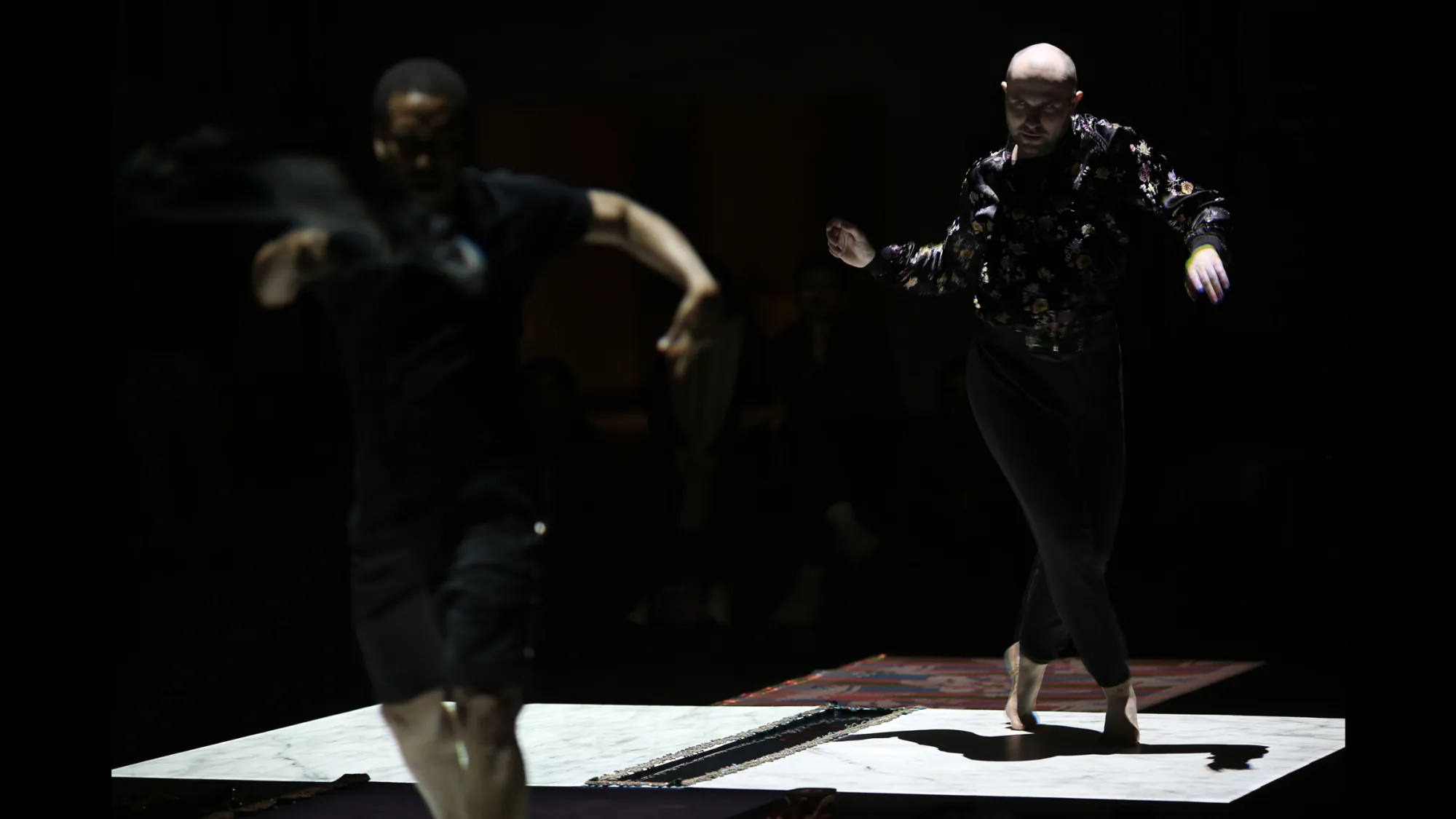
In the Mood for Frankie
Choreographer Trajal Harrell’s In the Mood for Frankie is a dance trio performed along a runway-style stage in EMPAC’s lobby. Featuring fluid, sultry movements atop three square platforms—two of which are connected by a stream of swimming goldfish—the performance revolves around the figure of the muse. In the Mood for Frankie is inspired by the co-founder of the Japanese dance/theater form “butoh,” Tatsumi Hijikata and his muses.
Along with Hijikata, Harrell’s other muses include butoh artists Kazuo Ohno and Yoko Ashikawa, modern dance choreographer Katherine Dunham, filmmaker Wong Kar Wai, fashion designer Rei Kawakubo, singer Sade, and Harrell's long-term relationship with dancers Thibault Lac and Ondrej Vidlar, who perform the work live with Harrell.
Trajal Harrell has been working in residence at EMPAC on a new project focused on lighting and video to evoke memorial and ritualistic practices within theatrical environments. While this new project will not be completed until 2019, In the Mood for Frankie is itself performed as a muse for this next work, and in celebration of 10YEARS at EMPAC.
Main Image: In the Mood for Frankie in EMPAC's lobby during 10YEARS. Photo: Paula Court.
There are many themes in choreographer Trajal Harrell’s oeuvre: modernism and postmodernism, minimalism, vogue, the fashion runway, pedestrianism, gender, and butoh (Japanese dance theater), to name a few. Complex layers of history and references relating to each theme are crafted into every moment of Harrell’s choreography, from props and costumes to sweeping physical gestures and micro-facial expressions. In the Mood for Frankie is no exception. The work focuses on the idea of the muse, a source of inspiration. Not surprisingly, this focus might come in part from Harrell’s own muses, butoh co-founders, Tatsumi Hijikata and Kazuo Ohno, who maintained a strong relationship to their muse, Argentine-born Spanish dancer Antonia Merce.
Harrell’s other influences include modern dancer-choreographer Katherine Dunham, filmmaker Wong Kar Wai, fashion designer Rei Kawakubo of Comme des Garcons, singer Sade, and butoh artist Yoko Ashikawa. Among these are Harrell’s closest muses, dancers Thibault Lac and Ondrej Vidlar, who emerge, re-emerge, and emerge again throughout Harrell’s works and who perform In the Mood for Frankie live with Harrell. These figures, their work, and their connections to one another—or sometimes lack thereof—have left an indelible mark on the context and aesthetics of Harrell’s choreography. With his cross-historical web of influences, Harrell transcends time and place in favor of an imagined and constructed performance landscape that delivers a new aesthetic apparition.
While themes consistent with Harrell’s oeuvre take center stage in In the Mood for Frankie, this work also highlights a new exploration for Harrell. With artistic collaborator Stéfane Perraud, Harrell delves into the world of projection. Used here as a light source and an aesthetic backdrop, slowly moving marble patterns are projected onto the dancers and their platforms. The virtual presence of digital material feels fitting for Harrell’s work, where inspirational specters abound. Here, the virtuality of spectrality and digitality collide.
—Ashley Ferro-Murray
Dates + Tickets
Season
Choreographer / Trajal Harrell
Installation Design / Trajal Harrell
Lighting Design / Stéfane Perraud
Soundtrack / Trajal Harrell
Costumes / Comme De Garçons, Anne Demeulemeester, Jean Paul Gaultier, and the performers
Company Manager / Jean-Stephan Kiss
Technical Director / Alexander Symes
In the Mood for Frankie is commissioned by The Museum of Modern Art, New York in co-production with Singapore International Festival of the Arts.
EMPAC 2018–19 presentations, residencies, and commissions are supported by Rensselaer Polytechnic Institute, the National Endowment for the Arts, and the Jaffe Fund for Experimental Media and Performing Arts.